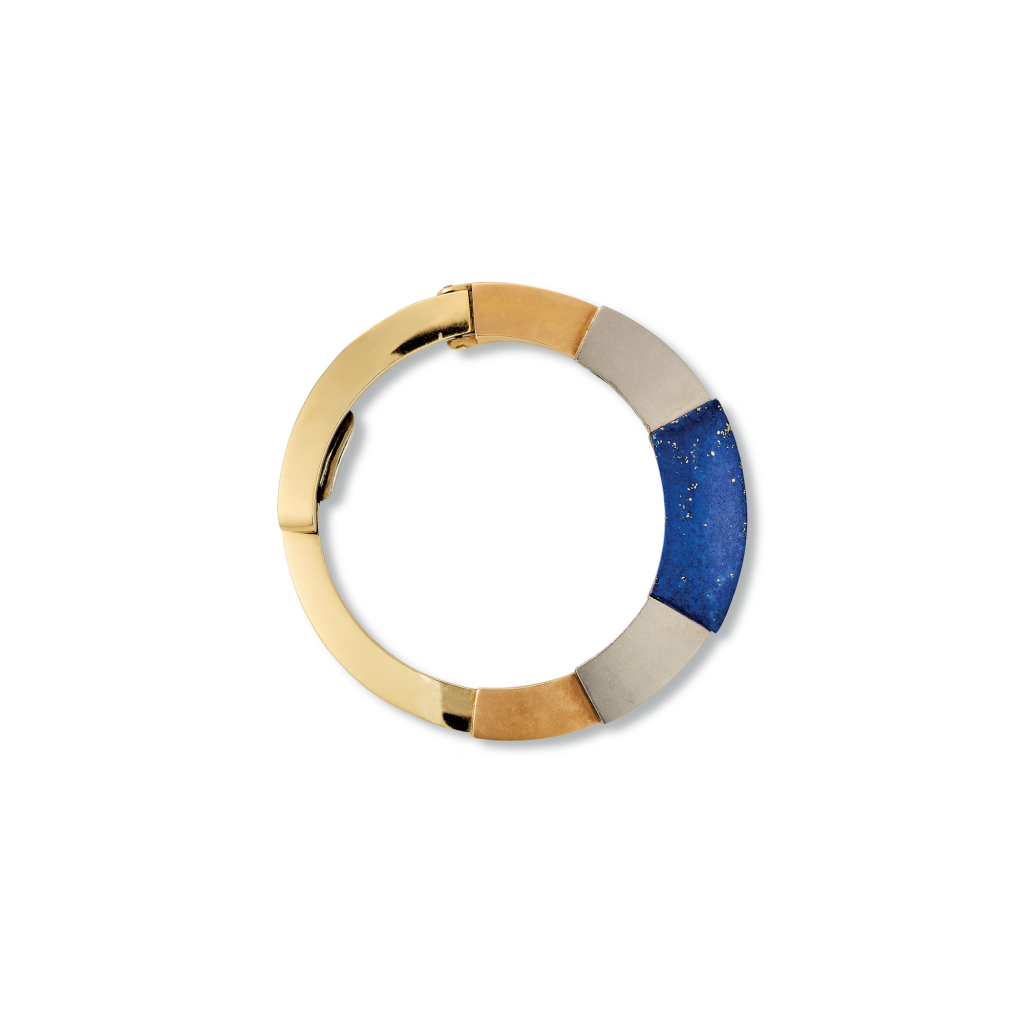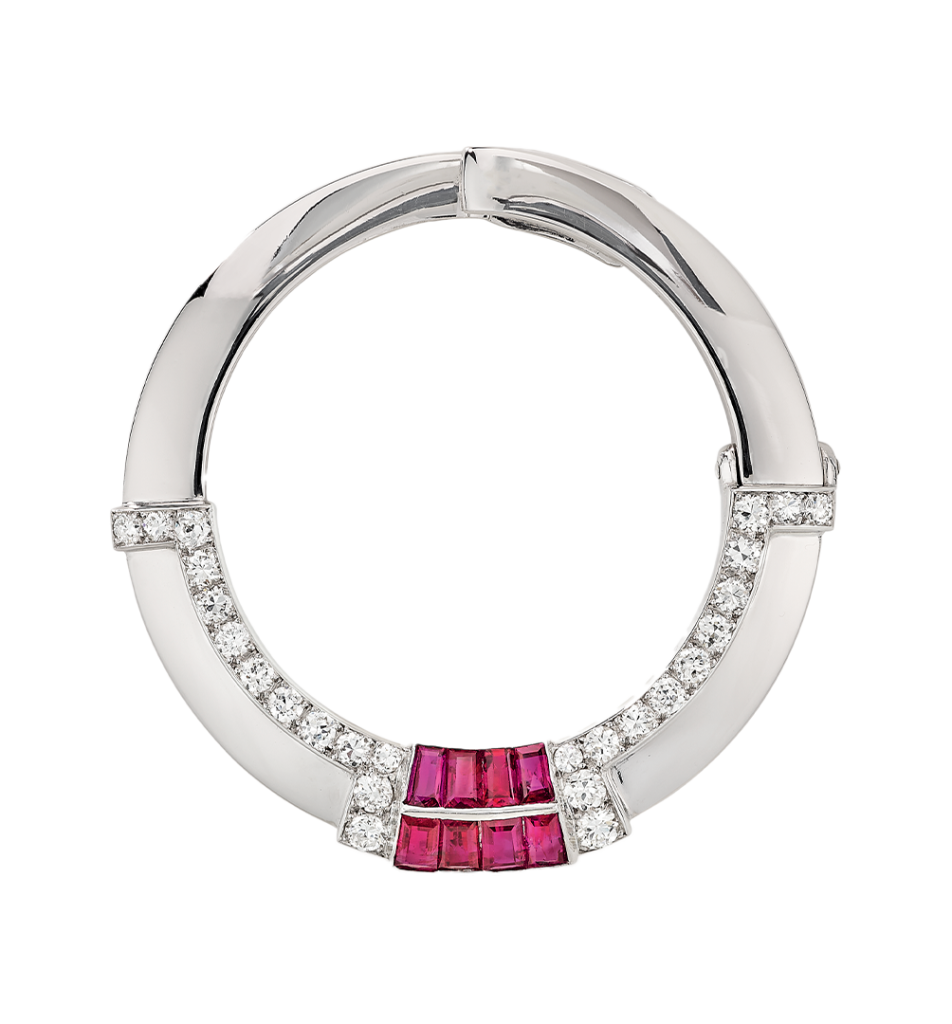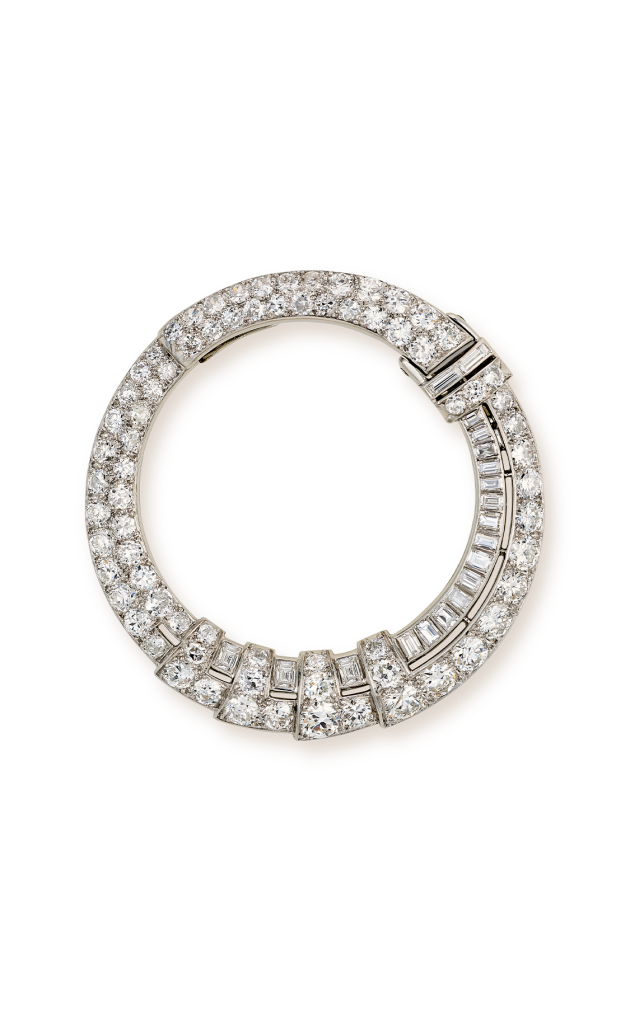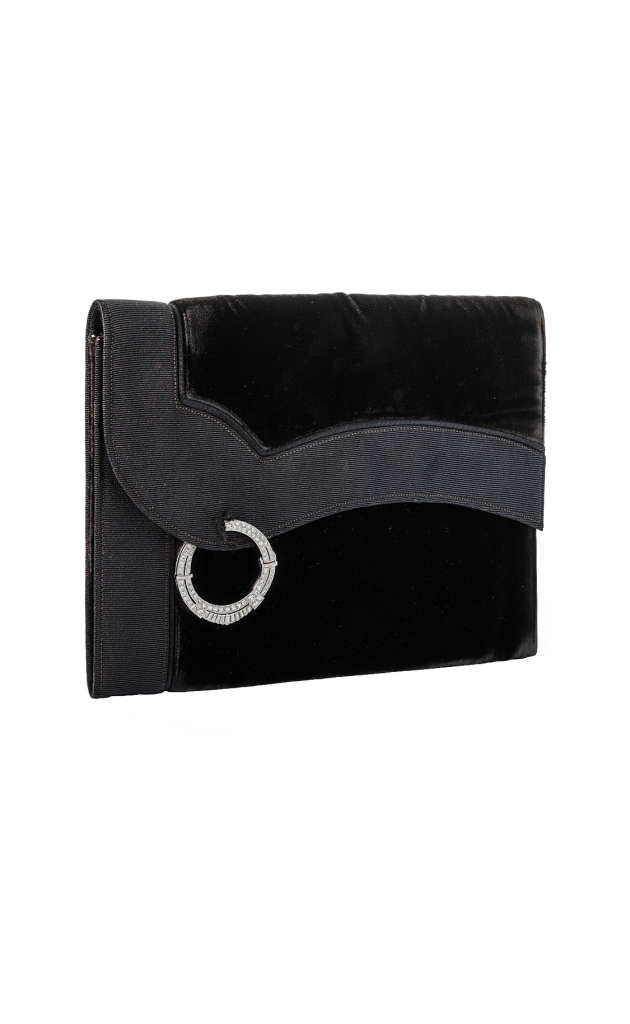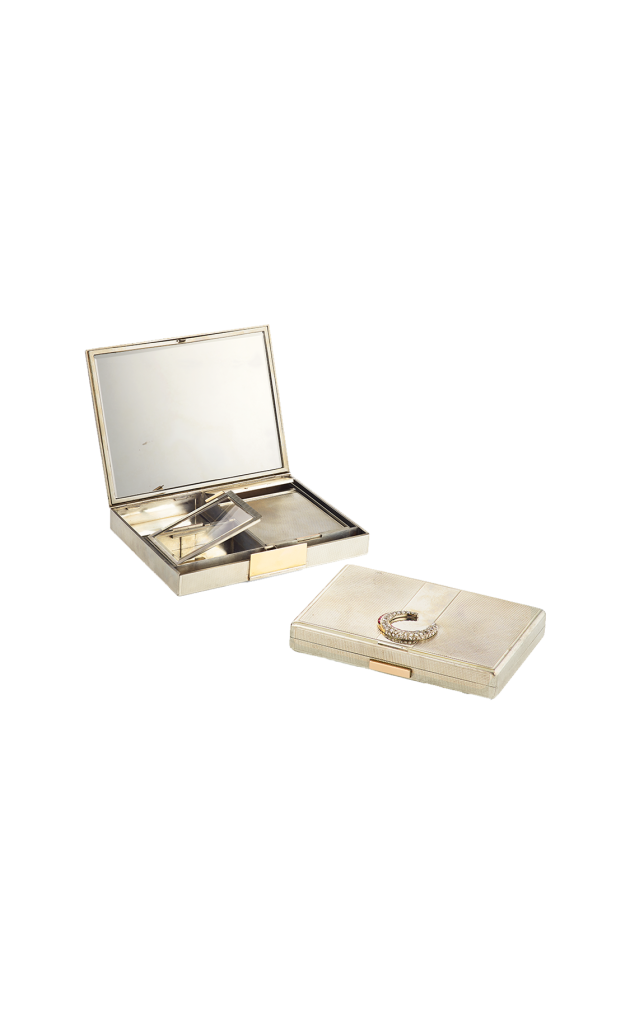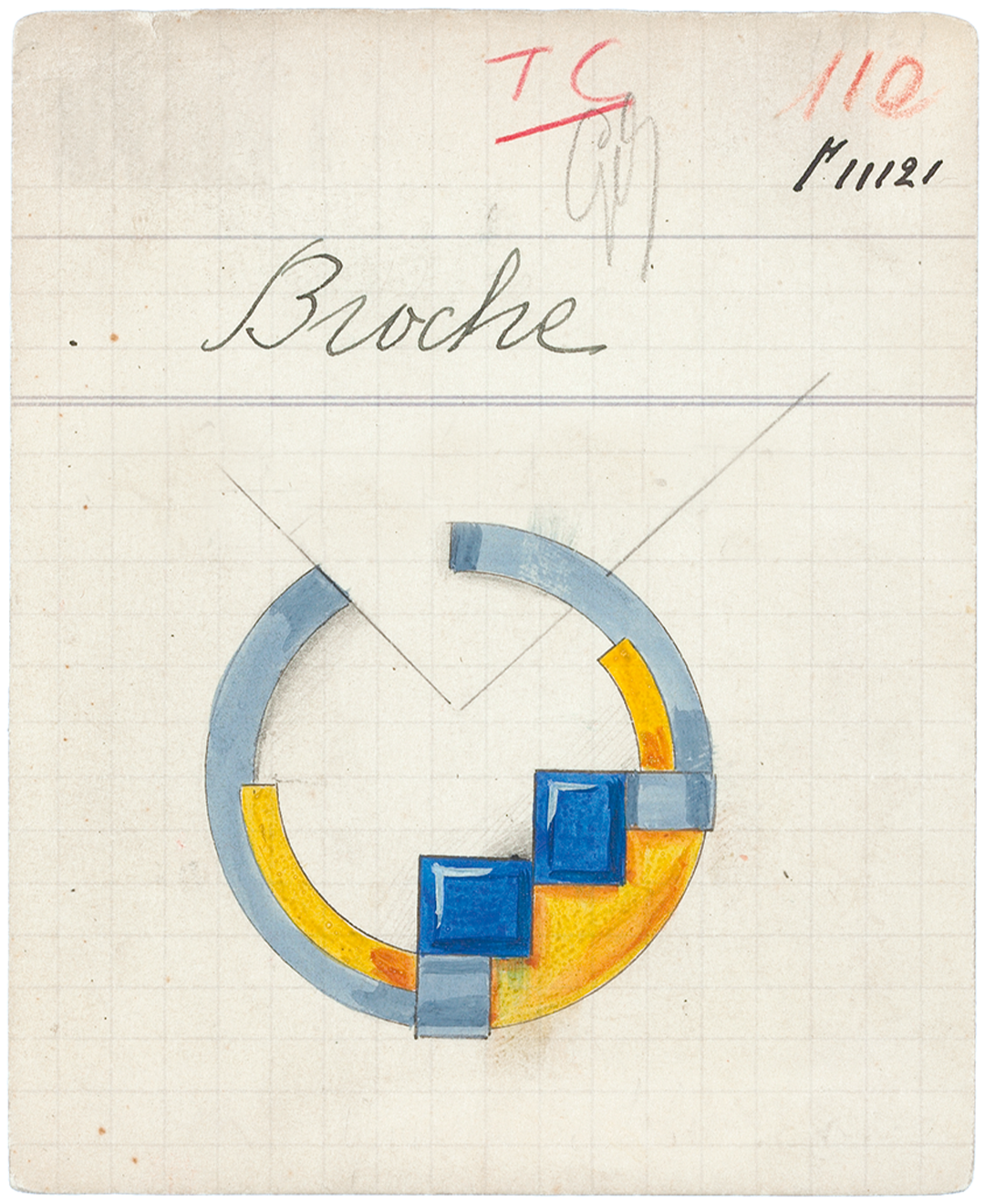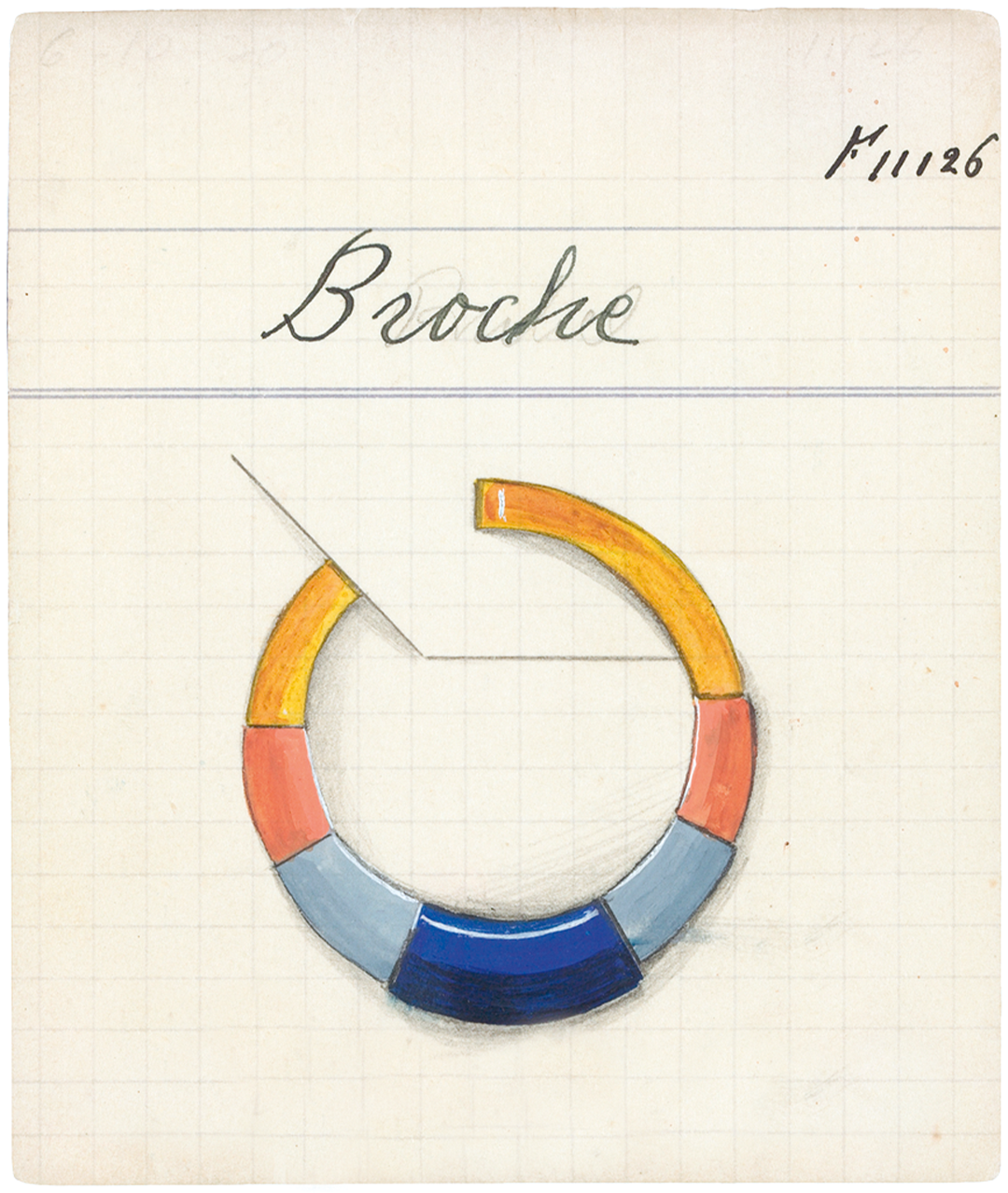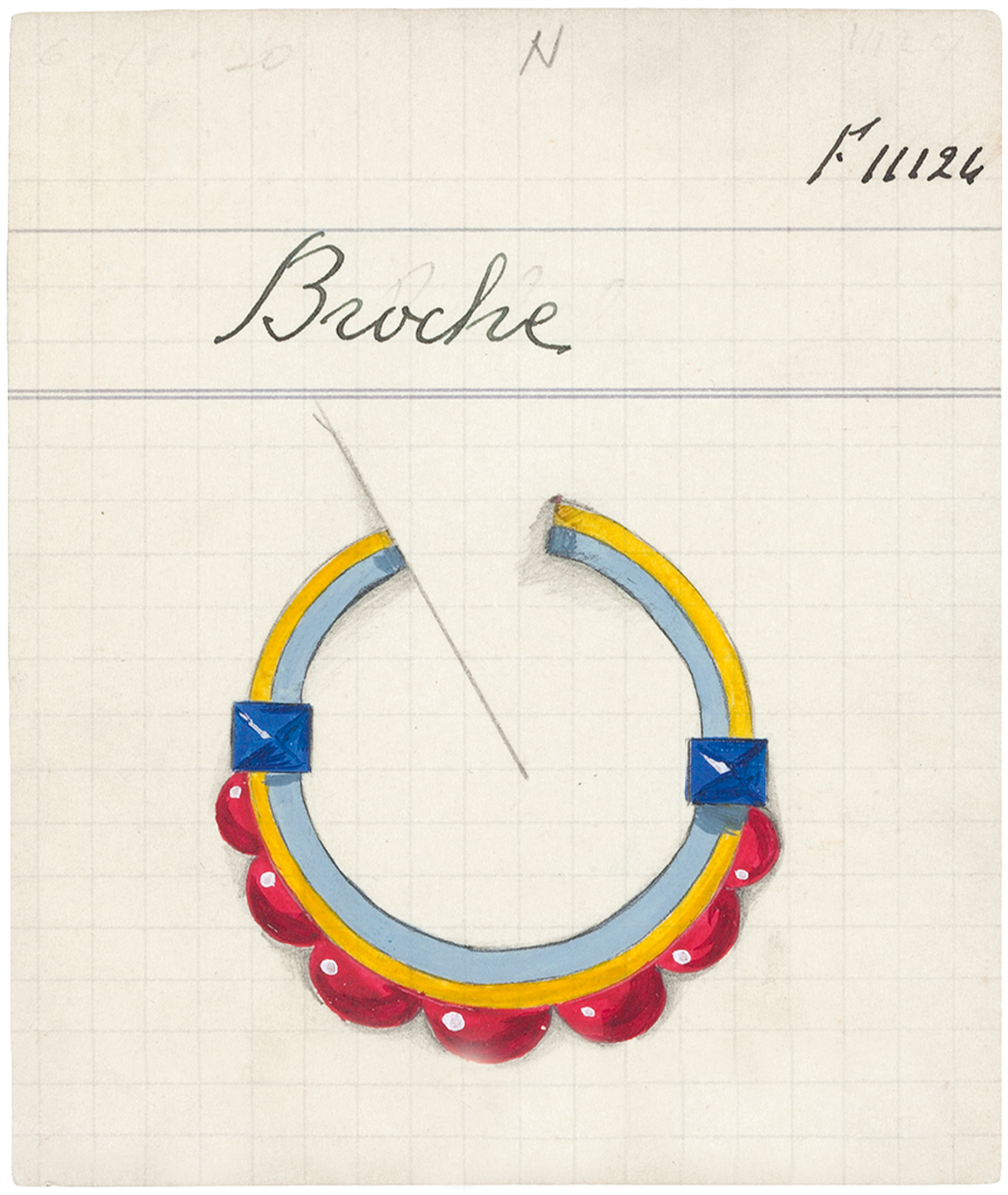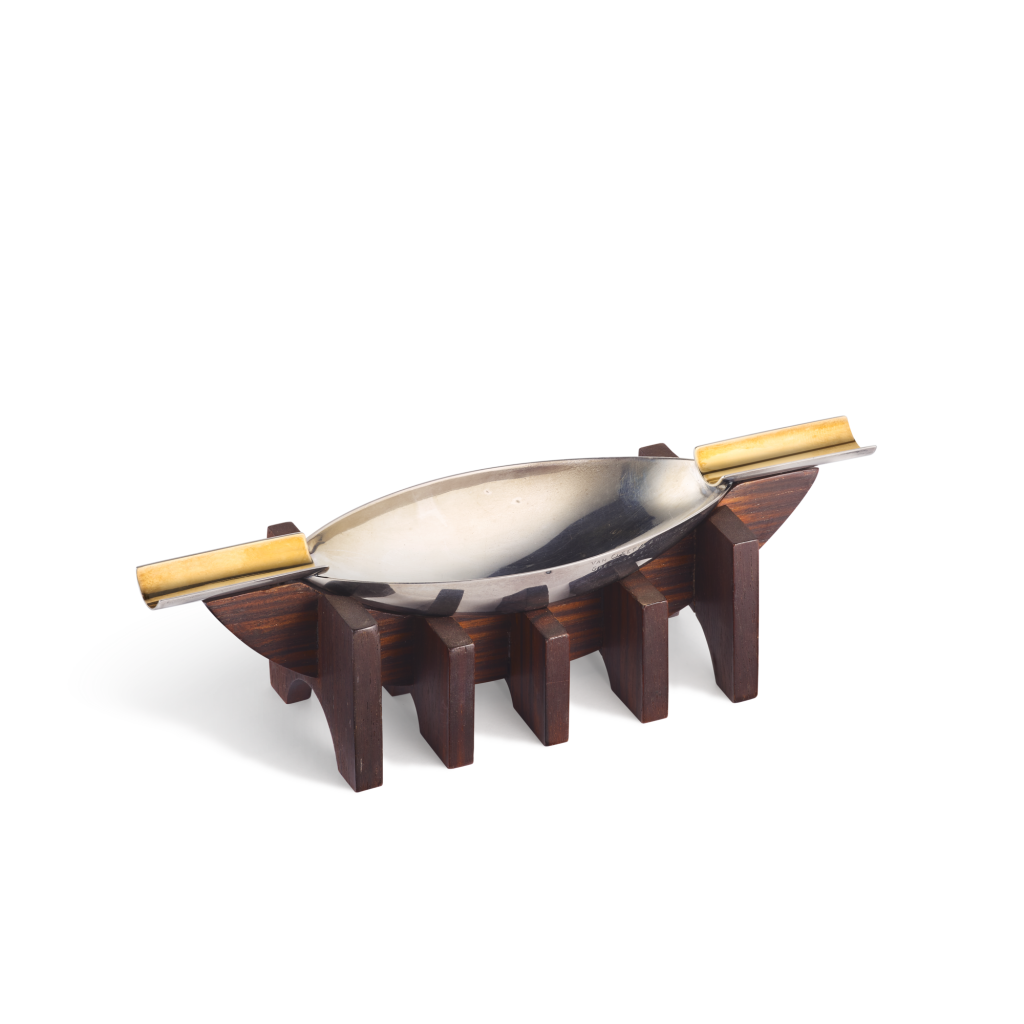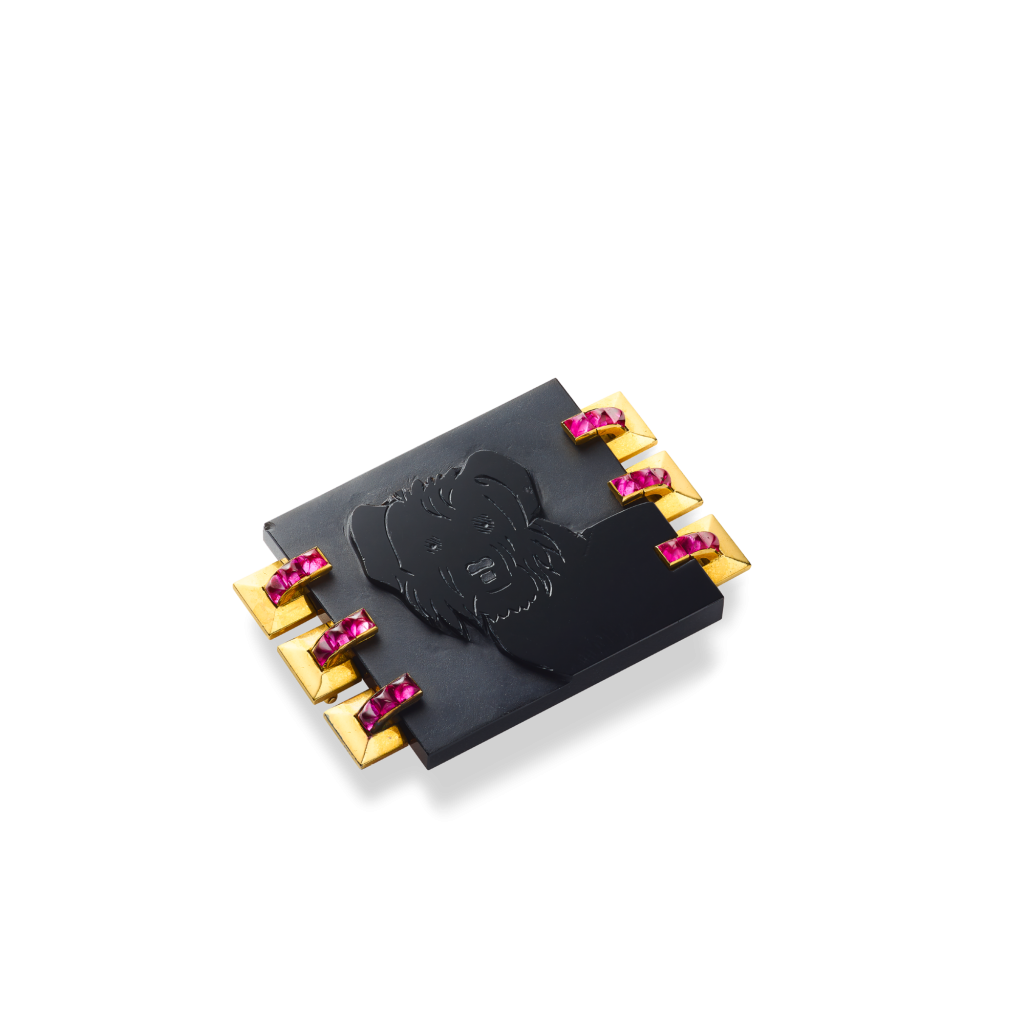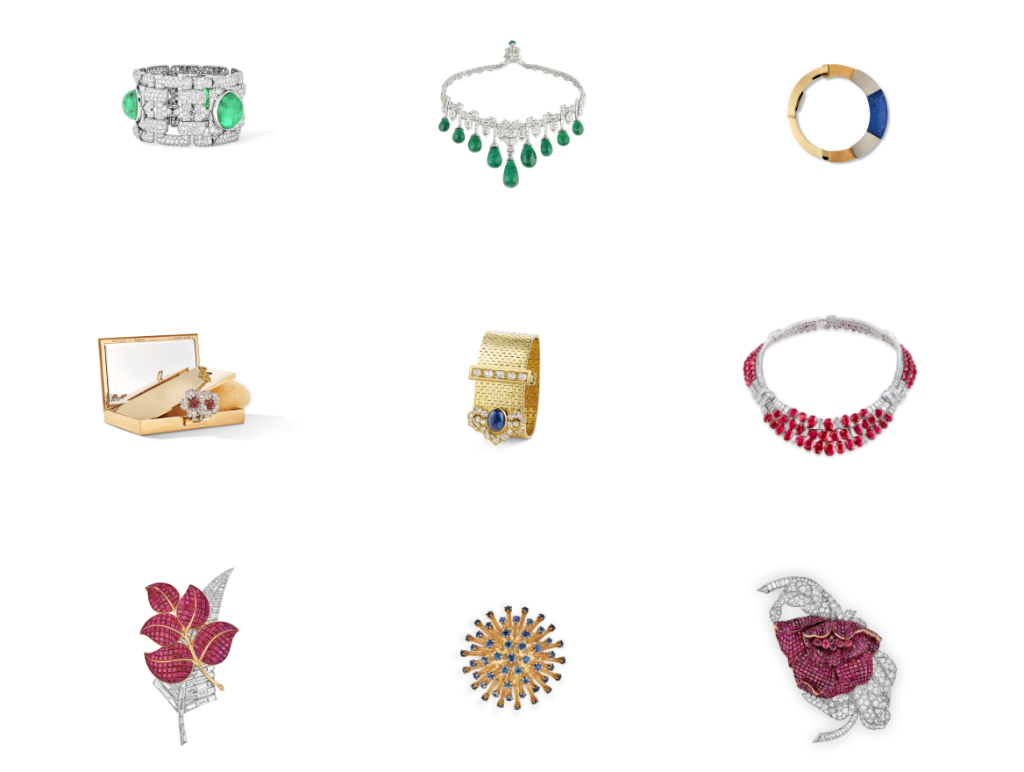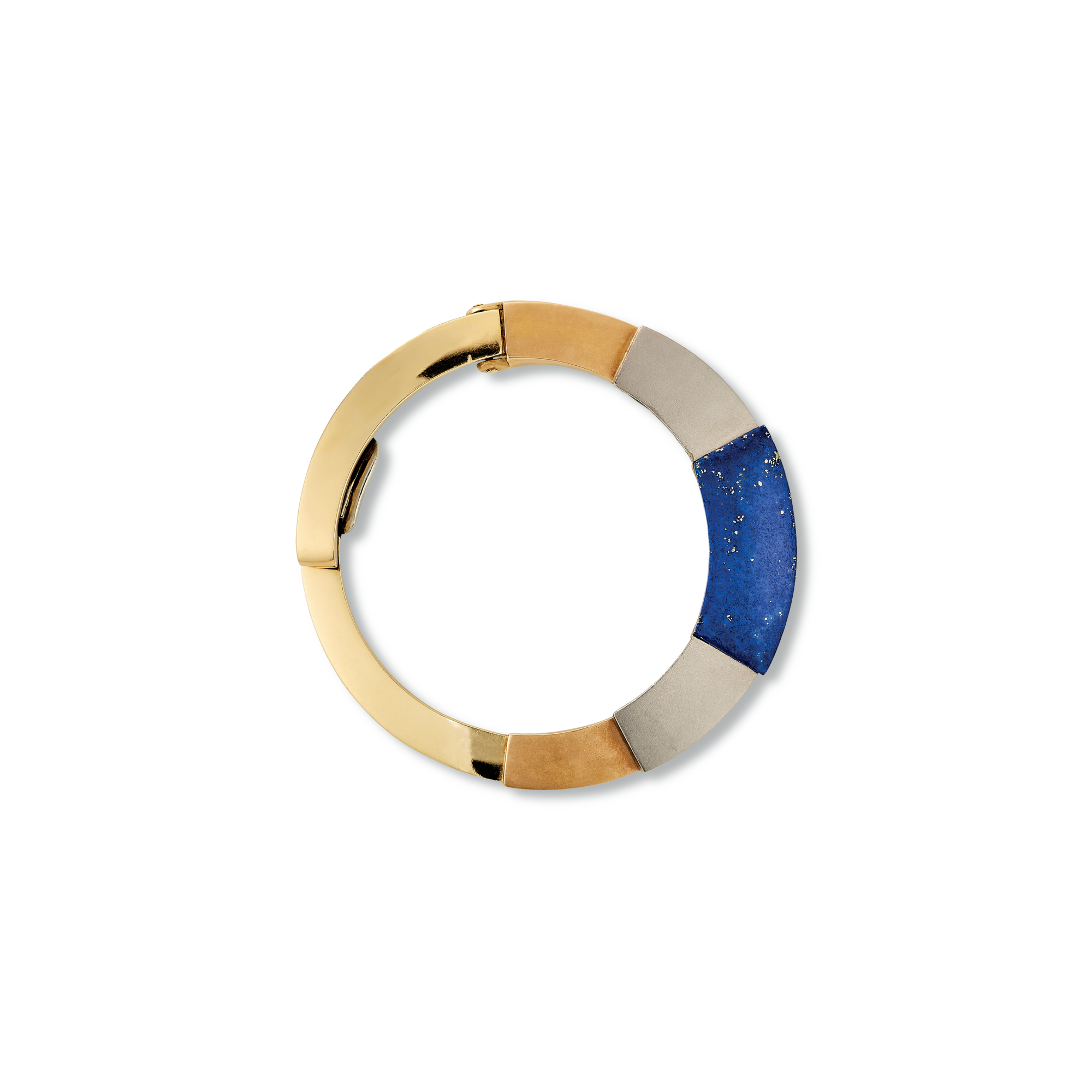
Circle brooch
Creation details
- Creation year 1930
- Stone Lapis Lazuli
- Material Gold
- Usage Clip
- Dimensions 49 × 51 mm
The Circle brooch is one of the Maison’s iconic designs from the 1930s, introducing a major pat- ented innovation: “a brooch without a pin”.
A spring hinge system at one end of the ring enabled the brooch to be closed by superimposing one end over the other. Thanks to this novel device, the precious circle could be worn on the collar of a jacket, but could also adorn a bag.
The modern circle
The name of this brooch refers to its simple geometric form. Composed of three juxtaposed metallic strips in yellow gold, pink gold, and osmior respectively, and a central plaque of lapis lazuli, the example seen here stands out for the contrast between metal and color, the latter being considered a key compositional element by artists of the Union des artistes modernes (UAM) and practitioners of Orphism. In this brooch, as in the famous motifs of subdivided circles by the Delaunay couple, the color—in this instance, the different metals and the lapis lazuli—conditions the form. This is a simple geometric form that can be used in a number of chromatic combinations.
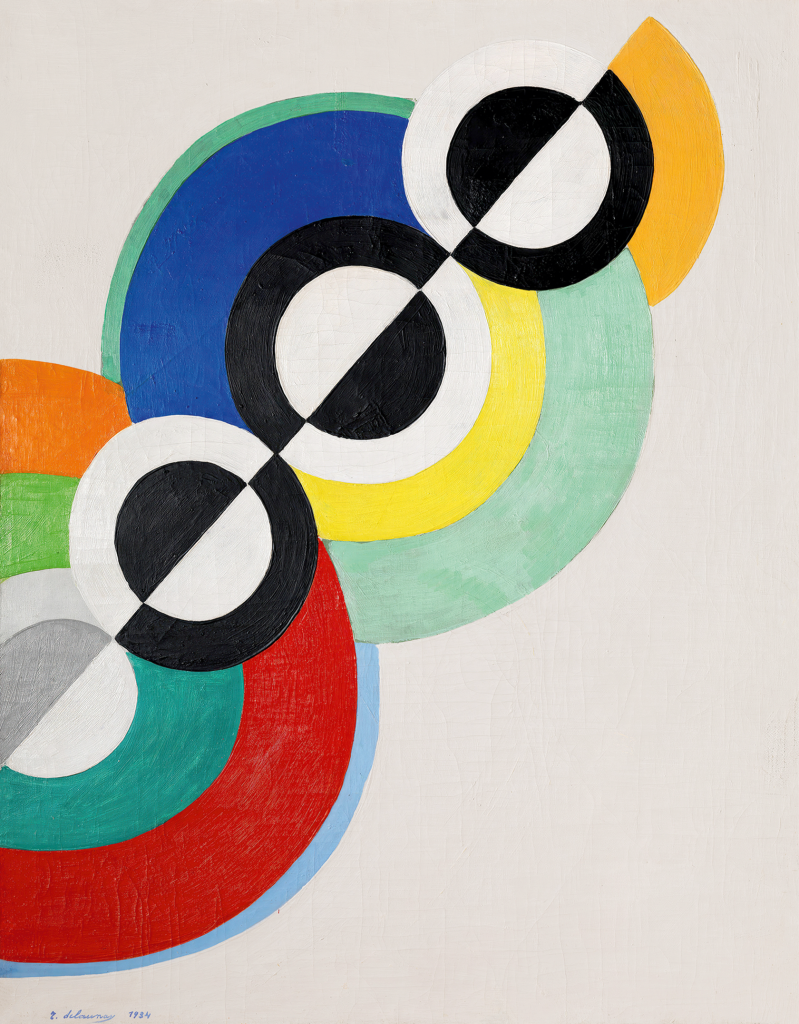
The circle in diamond jewelry
While this model is essentially composed of metal, it can also be designed with precious stones. The circle, made of platinum, can be pave-set with brilliant- and baguette-cut diamonds, creating a monochrome brooch in white diamond jewelry.
The representatives of a pluralist Art Deco
The different versions of the Circle brooch illustrate the two major trends of the Art Deco style. The first, known as “traditionalist,” is typified by the use of precious materials and is mainly seen in lavish creations.
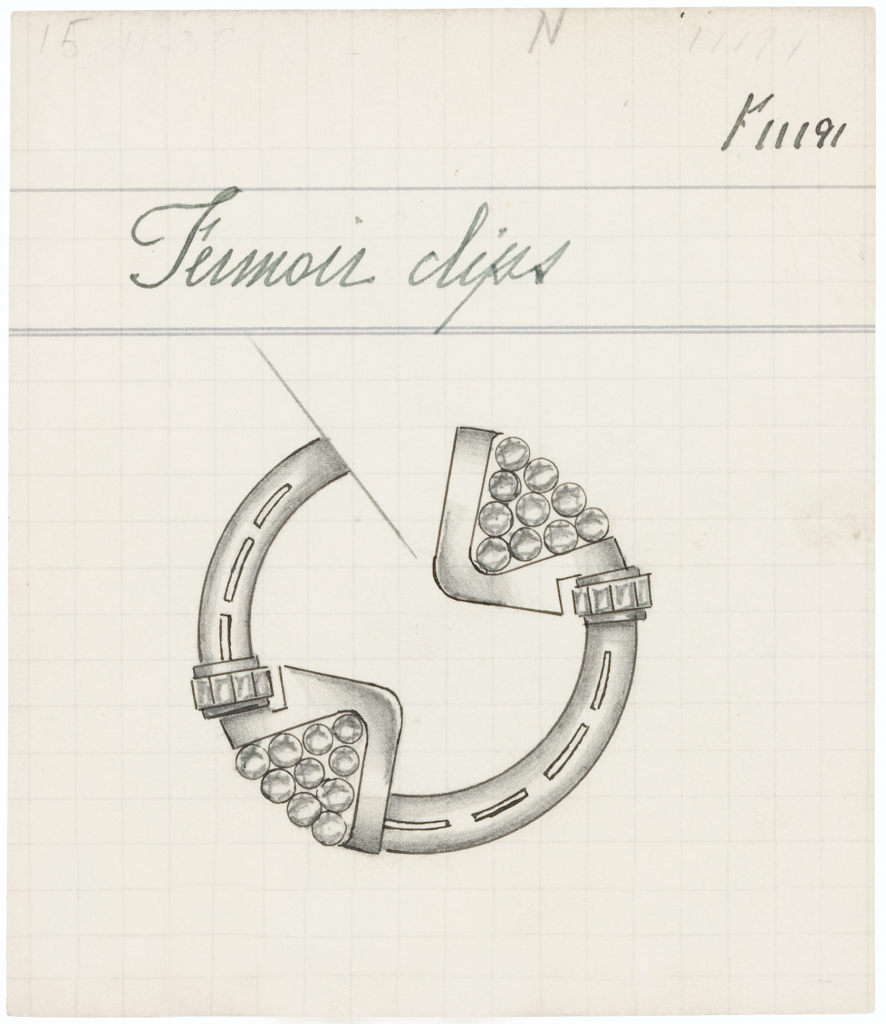
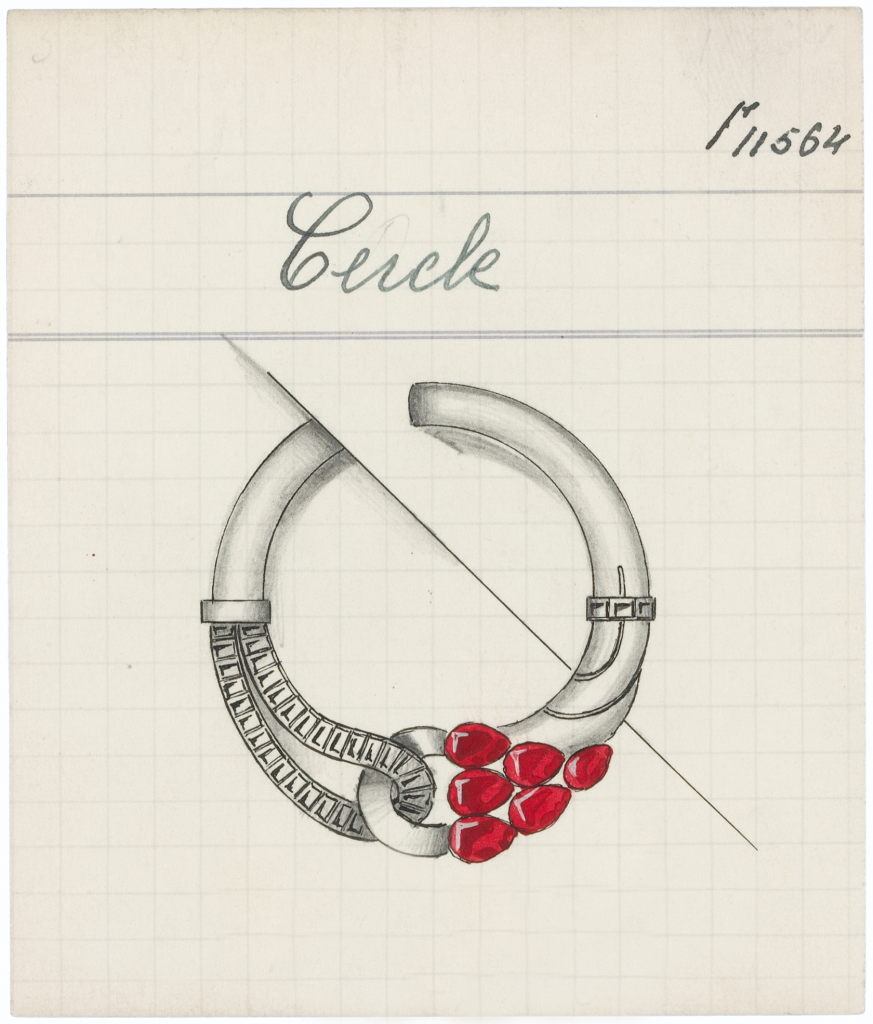
The second, referred to as “modernist,” differentiates itself from the first in its use of new materials, giving pride of place to metal.
This brooch crystallizes the conflict between these two currents that took place in the late 1920s, as embodied on the one hand by the Société des artistes décorateurs in defense of a form of decorative conservatism, and on the other, by the UAM, founded in 1929 in opposition to the first, emphasizing function over form, utility and practicality over decoration. It nonetheless highlights the porosity of the borders between these two currents, oscillating between traditionalism and modernity, as does the work of the interior decorator Jacques-Émile Ruhlmann or the architect Pierre Chareau.
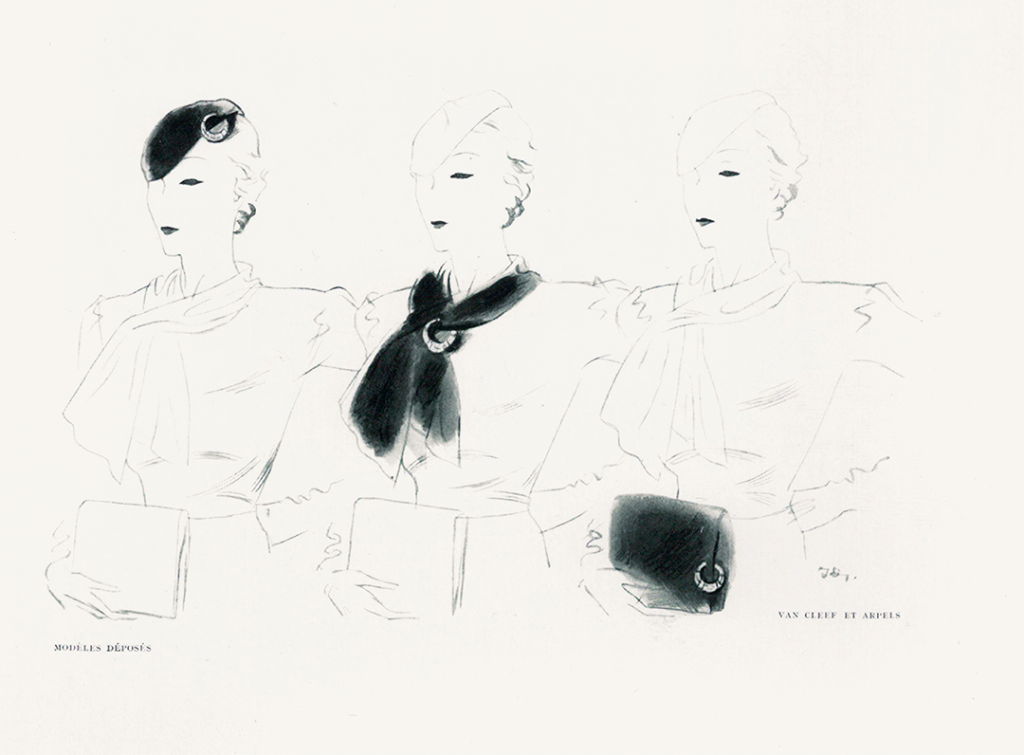
To go deeper
